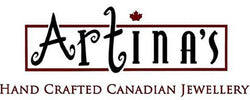Argillite (Kwawhlhal) is a type of rock similar to slate or shale. Argillite used in jewellery exclusively comes from Haida Gwaii’s Slatechuck quarry. This type of argillite doesn’t contain quartz or feldspar, making it completely unique from other argillites all over the world. Argillite is an incredibly soft stone that only ranks at about 2.5 on the Mohs scale. It has a rich history in Haida art and jewellery.

Origins of Argillite
In Haida’s Skidegate dialect, argillite is called kwawhlhal. Argillite used in jewellery is mined from the Slatechuck quarry near Skidegate on the eastern side of Graham Island. This quarry is an incredibly remote and sacred place. Only a select few know how to get to the quarry and few will allow outsiders to know its location. Because argillite is so valuable to the Haida, only Haida members have access to the materials from the Slatechuck quarry. In 1941, the Skidegate band acquired the land surrounding the quarry. To this day, you must receive special permission from the band council to visit.
There is debate over the origins of argillite carvings. Many believe the practice became popular in the early 19th century because of European settlers. The theory is that the Haida used their argillite carvings to trade with the visiting Europeans. Carvings from this era include references from both Haida and European cultures, many of which included some kind of visual pun or joke.
Although argillite carvings may have been popularized by European traders, other anthropologists believe carving argillite is a long-standing practice since before settlers arrived. This art form continues to thrive and develop as time goes on.


Purchasing Argillite Carvings
When purchasing argillite, it’s important to distinguish whether or not the piece is authentic. Real argillite exclusively comes from and is carved by, Haida tribe members. Art claiming to be anything else is not real argillite and should be avoided. Another way to tell whether the argillite is real or fake is to touch the stone. As a stone, argillite typically feels cool to the touch. Some jewellery may include a special backing to protect the stone since it’s so soft. If you can’t touch the stone, make sure you’re purchasing from a reputable seller like Artina’s Jewellery or an independent artist directly from Haida Gwaii.


Like other sculptures, imagine the argillite carving coming to life and telling a story. When carvers see a piece of slate, they typically already see the figure trapped inside the stone. The material is then cut into an approximate size using a carpenter’s saw. Then using chisels and other cold metal tools, the artist adds detail. Finally, the stone is sanded and polished until it achieves a glossy sheen. Throughout the years, the tools argillite carvers used have evolved and changed. There could be a number of different techniques an artist may use while carving. As mentioned, this is a practice that continues to grow and develop to this day.

14 products















